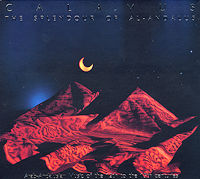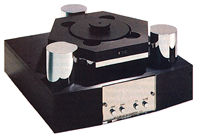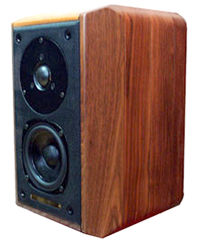LATEST ADDITIONS
Recording of May 1995: Calamus: The Splendour of al-Andalus
<B>CALAMUS: <I>The Splendour of al-Andalus</I></B><BR> Eduardo Paniagua, chabbada, flutes, salterio, târ, cymbals, voice; Luis Delgado, oud, citola, guimbri, doira, târ, handclaps, voice; Begoña Olavide, voice, quanun, salterio, caraqebs, târ, darûga; Rosa Olavide, voice, rabel, viola, portative organ, cymbals; Carlos Paniagua, darbûga, t'abila, pandero, campanillas, voice<BR> M•A Recordings M026A (CD only). Todd Garfinkle, prod., eng. DDD. TT: 60:10
Mark Levinson No.26 preamplifier & No.20 monoblock power amplifier
I must admit, right from the outset, that I find reviewing electronic components harder than reviewing loudspeakers; the faults are less immediately obvious. No preamplifier, for example, suffers from the frequency-response problems endemic to even good loudspeakers. And power amplifiers? If you were to believe the older generation of engineers—which includes some quite young people!—then we reached a plateau of perfection in amplifier design some time after the Scopes Monkey Trial but well before embarking on the rich and exciting lifestyles afforded us by Reaganomics. (In the UK, it is generally felt by these people that the date coincided with the introduction of Quad's first current-dumping amplifier, the 405, in 1976.)
C.E.C. TL 0 CD transport
Fantasy review time. I first heard about the C.E.C. TL 0 in the May '94 <I>Stereophile</I> (Vol.17 No.5), in Audio Mogul Richard Schram's Manufacturer's Comment to my review of the C.E.C. TL 1. I wasn't sure if he was kidding when he threatened the world with a cost-no-object $17,500 CD transport. Just what we all need!
Gradient Revolution loudspeaker
A.C. Wente of Bell Telephone Labs was apparently the first person to get the bright idea (in the 1930s) of measuring sound transmission in a small room. A loudspeaker at one point reproducing pure tones of constant power, and a microphone at another point measuring sound-pressure levels, gave him the means to assess the room's impact on sound quality. The measured frequency response was so ragged that I'm positive the venturesome Dr. Wente was duly shocked.
Celestion SL600si loudspeaker & DLP600 digital equalizer
Following my reports on 13 mainly inexpensive loudspeakers that have appeared in the last four issues of <I>Stereophile</I>, I thought I would give myself a treat this month by reviewing the latest incarnations of a model that has stood the test of time: the two-way Celestion SL600Si...This is a carefully tuned infinite-baffle design, sacrificing ultimate extension for upper-bass and lower-midrange quality. Its crossover is conventionally British in that it puts flatness of on-axis amplitude response ahead of time coherence, while everything about it, from drive-units to the cabinet itself, is flagrantly "high-tech."
Perfect Sound Forever?
When some unknown copywriter coined that immortal phrase to promote the worldwide launch of Compact Disc in late 1982, little did he or she foresee how quickly it would become a term of ridicule. Yes, early CDs and players offered low background noise, a flat spectral balance, and freedom from wow and flutter. But all too often, the music encoded in the "perfect-sounding" pits seemed to have taken a vacation, leading the renowned recording engineer John Eargle to offer, in the medium's defense, that if you were to hear just one CD that sounded good, digital technology would be proved to be okay.
B&W Matrix 805 loudspeaker
Sonus Faber Minima FM2 loudspeaker
Imaging, imaging, imaging. That's what I thought when I first heard the Sonus Faber Electa Amators reviewed by Jack English last October. How could such small speakers create such a wide, deep soundfield? John Hunter, president of Sumiko, Ltd. and importer of Sonus Faber products, was amused but not surprised at my reaction. I did the natural thing and begged for a review pair.
B&K ST-140 power amplifier
I must admit that even before I connected up this amplifier I was put off by the accompanying literature. B&K makes some persuasive points about the validity (or rather the lack thereof) of some traditional amplifier tests, but the literature was so loaded with flagrant grammaticides, syntactical ineptitudes, and outright errors that I could not help but wonder if the same lack of concern had gone into the product itself (<I>eg</I>, the term "infrasonic" is used throughout to mean "ultrasonic"). Good copy editors aren't that hard to find; B&K should have found one.




